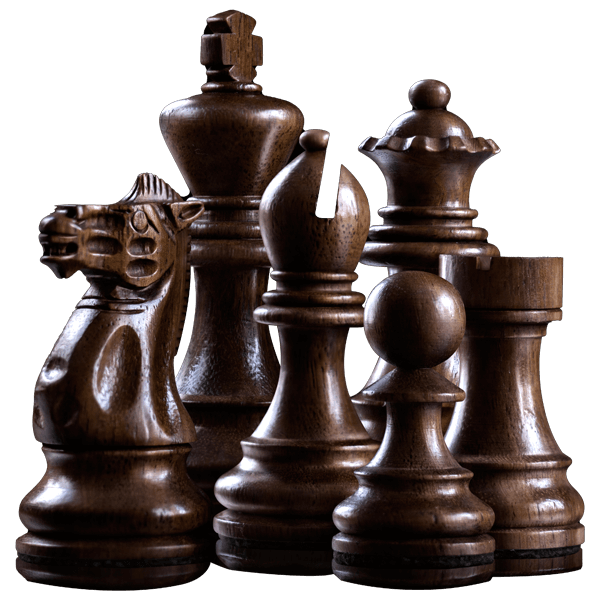Handicaps in chess fundamentally reshape strategic priorities for both players by altering material balances, time controls, or positional dynamics. These adjustments force deviations from standard chess principles, requiring players to recalibrate their approaches to openings, middlegame plans, and endgame transitions. For instance, when a stronger player surrenders a knight or pawn, they must compensate through hyper-focused piece activity and prophylactic thinking, while the weaker player leverages their material advantage to control space and simplify positions129. This tension between structural compromise and tactical adaptation creates unique strategic landscapes that diverge sharply from even games.
Types of Chess Handicaps and Their Strategic Implications
Material Odds: Piece and Pawn Removal
Material handicaps—such as removing a knight, pawn, or rook—create asymmetrical starting positions that disrupt standard opening theory. The f-pawn (f2 or f7) is frequently removed in pawn odds games because its absence doesn’t grant the disadvantaged player immediate file control for rooks or bishops19. However, this creates long-term king safety vulnerabilities. For example, in a pawn and two moves handicap (where White removes the f7-pawn and plays 1.e4 and 2.d4), Black faces early threats like Qh5+ unless they adopt passive setups with …e6 or …Nh61. The stronger player must prioritize rapid development to offset the missing pawn, while the weaker player aims to simplify the position through exchanges47.
Knight odds (removing a knight from b1/g1) force the stronger player to rely on bishop pair advantages and central control. Historical games between masters like Morphy and amateurs show that the knight-less side often adopts closed positions to limit the opponent’s piece mobility, whereas the beneficiary targets weak squares like d5 or f519.
Time Odds and Cognitive Load
Time handicaps, where the stronger player has less clock time, compress decision-making windows. This pressures the advantaged player to rely on intuition over deep calculation, often leading to suboptimal middlegame plans. Conversely, the weaker player can exploit time scrambles by complicating the position with tactical shots58.
Special Conditions: Draw Odds and Movement Restrictions
Under draw odds—where a draw counts as a loss for the stronger player—the disadvantaged side avoids symmetrical pawn structures and seeks perpetual check opportunities. Movement restrictions, such as prohibiting castling or limiting pawn advances, compel unconventional king safety measures and early queen trades45.
Opening Adjustments in Handicap Games
Compensating for Missing Material
When down a pawn or piece, stronger players often prioritize rapid development to offset material deficits. For example, in knight odds games, the disadvantaged player might deploy bishops to long diagonals (e.g., c4 and f4) to control central squares and restrict enemy knight outposts19. The Sicilian Defense’s accelerated dragon variation becomes less viable without a knight, prompting shifts toward Caro-Kann structures that emphasize solid pawn chains7.
Exploiting Asymmetrical Pawn Structures
The weaker player, when granted extra material, often aims to simplify the position through early trades. In pawn and move handicaps, they might play 1.e4 2.d4 3.Nc3 to pressure Black’s compromised kingside, forcing concessions like …g6 that weaken dark squares1. Historical accounts note that masters like Staunton preferred exchange odds (rook for knight) over pawn handicaps because they allowed more “normal” strategic play, albeit with endgame disadvantages14.
Middlegame Dynamics Under Handicaps
Reimagining Piece Activity
With material deficits, the stronger player’s pieces must achieve maximum coordination. In rook odds games, the disadvantaged side often reroutes their queen to act as a pseudo-rook, controlling open files while bishops target weak pawns9. Conversely, the beneficiary of a rook might launch a kingside attack using their material superiority, knowing the opponent lacks defensive resources14.
Pawn Structure Management
Handicaps amplify the importance of pawn breaks. A missing f-pawn incentivizes the stronger player to push e5/e4 to destabilize the center, while the weaker player seeks to fix pawn weaknesses through moves like …c5 or …d579. In two-pawn odds games, the material-rich side often creates passed pawns on opposite wings, forcing the opponent into passive defense1.
Endgame Considerations
Converting Material Advantages
Endgames under handicaps hinge on precise technique. A single extra pawn often suffices for victory, but missing a knight complicates minor piece endgames. For example, in knight odds endgames, the stronger player avoids bishop vs. knight scenarios and instead seeks rook endgames, where their positional understanding can offset material deficits19.
Time Pressure and Calculation
Time handicaps exacerbate endgame errors. The stronger player might premove straightforward plans like king centralization, while the weaker player uses their clock advantage to calculate forcing lines58.
Psychological and Training Impacts
Adjusting Risk Tolerance
Handicaps force the stronger player to take calculated risks. Without a knight, they might sac pawns to open lines for bishops, while the weaker player avoids complications to preserve their material edge24. This dynamic mirrors real-world scenarios where resource constraints necessitate creative problem-solving.
Pedagogical Value
Larry Kaufman advocates handicaps as training tools, arguing they help students “feel” progress as they graduate from knight odds to even games1. By confronting masters in imbalanced positions, learners internalize prophylactic thinking and tactical alertness27.
Case Studies: Historical and Engine Handicap Games
Morphy’s Pawn and Move Dominance
Paul Morphy’s 1858 games at pawn and move odds against amateurs showcased his ability to leverage rapid development. In one notable game, he played 1.e4 2.d4 3.Nc3, pressuring Black’s compromised kingside and forcing resignation by move 209.
Komodo vs. Nakamura: Two-Pawn Handicap
In a 2021 exhibition, Hikaru Nakamura defeated Komodo Dragon despite a two-pawn handicap. The engine exploited its positional understanding to create a passed d-pawn, while Nakamura’s time pressure led to an oversight in a rook endgame47.
Strategic Recommendations for Handicap Games
For the Stronger Player:
- Prioritize piece activity over material recovery—compensate for missing pawns with bishop pair dominance or rook lifts79.
- Avoid premature attacks—build incremental advantages through prophylactic moves like h3 or a4 to limit counterplay14.
- Provoke pawn weaknesses—isolated or doubled pawns become liabilities in endgames7.
For the Weaker Player:
- Simplify when ahead—trade pieces to capitalize on material advantages in endgames29.
- Target structural vulnerabilities—exploit holes created by missing pawns (e.g., f7 gaps) with queen-bishop batteries14.
- Manage the clock—in time odds games, complicate positions to induce time scrambles58.
Conclusion
Handicaps in chess transform the game into a laboratory of adaptive strategy, where conventional principles bend under the weight of artificial constraints. From Morphy’s era to modern engine matches, these imbalances reveal the fluidity of chess mastery—the ability to recalibrate attacks, fortify weaknesses, and exploit fleeting opportunities. As both training tools and competitive equalizers, handicaps underscore chess’s depth, proving that even a missing pawn or knight can birth novel strategies worthy of grandmaster study.

